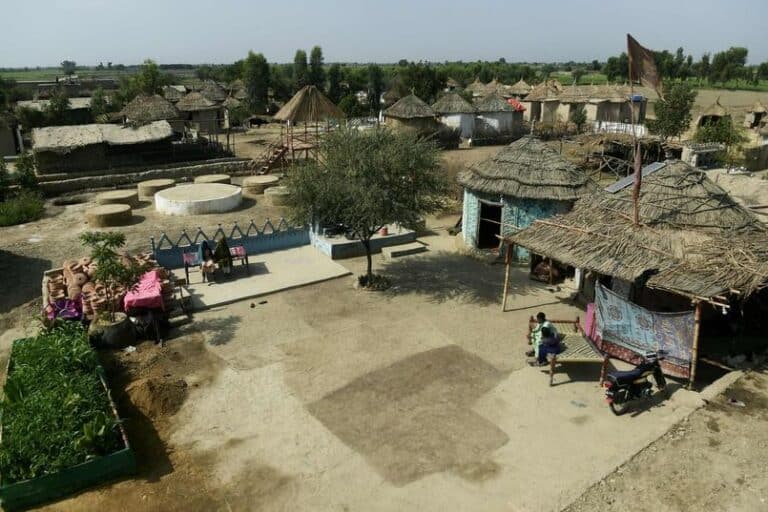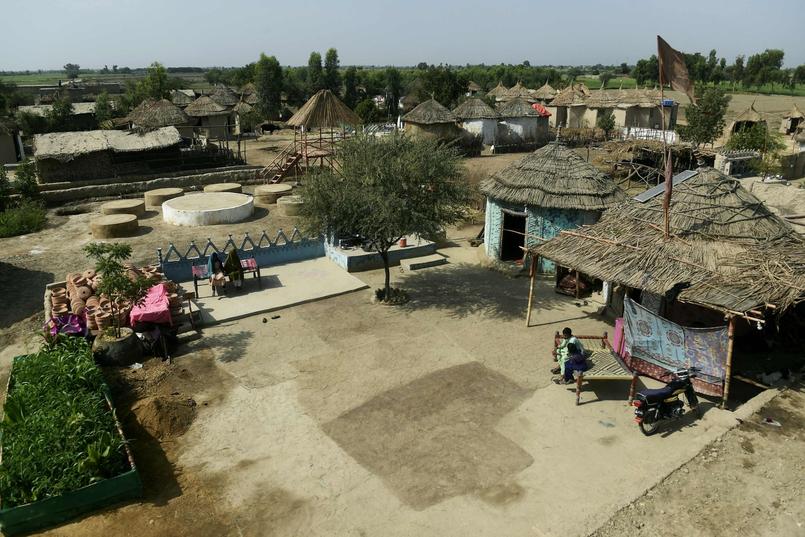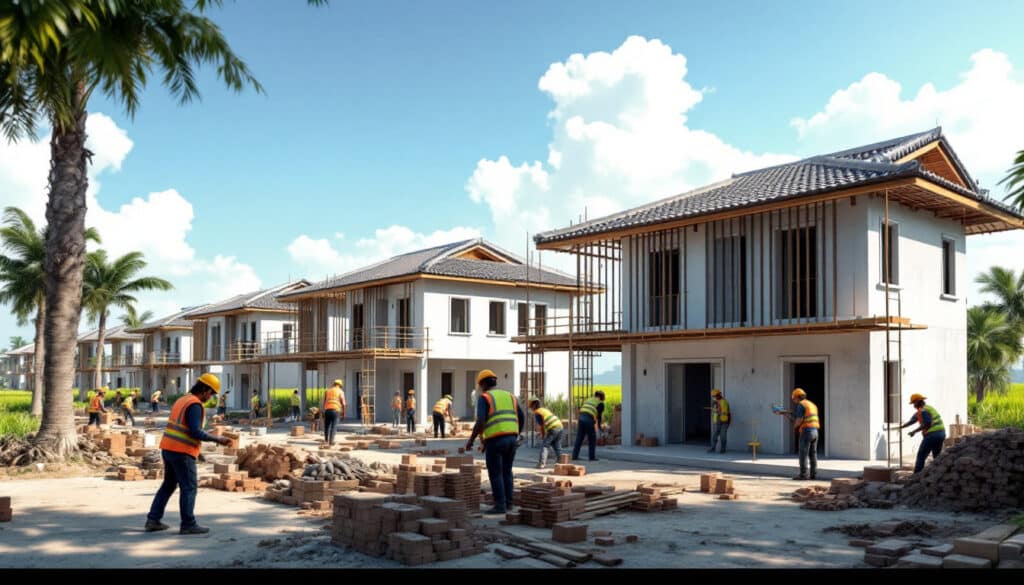The revolution of multiphoton 3D lithography is gaining new momentum thanks to an interdisciplinary team from Vilnius University. This comprehensive guide, published in Nature Reviews, opens new perspectives for researchers around the world. Led by the Laser Research Centre, this project brings together experts from various countries, uniting their skills to overcome the technical challenges in the field.
By exploiting localized photochemical reactions through multiphotonic absorption, this technology allows for unprecedented nanoscale precision. Potential applications range from nanophotonics to biomedical scaffolds, offering innovative and sustainable solutions. The guide also addresses issues of reproducibility, harmonizing methods and terminologies for a coherent advancement of the sector. This pioneering work positions Vilnius University as an indispensable leader in the field of technological innovation.

Multiphoton 3D lithography (MP3DL) is establishing itself as a major advance in the field of additive manufacturing. Recently, an interdisciplinary team led by Vilnius University (VU) published the first comprehensive guide on this technology in the journal Nature Reviews. This guide aims to standardize methods and address reproducibility issues that have long fragmented the field.
Table of Contents
ToggleWhat is multiphoton 3D lithography and why is it revolutionary?
MP3DL uses multiphotonic absorption to induce localized photochemical reactions through ultrafast laser pulses. This method allows for highly confined energy deposition, facilitating the crossing of materials with nanoscale precision. According to the authors of the guide, this technique enables the fabrication of complex three-dimensional geometries with feature dimensions below 100 nm. These capabilities open applications in areas such as nanophotonics, biomedical scaffolds, and optical components.
Compared to traditional lithography methods, MP3DL offers superior resolution and increased flexibility in creating complex three-dimensional structures. This technology also minimizes thermal damage to surrounding volumes, which is crucial for sensitive applications like biomedical devices.
How did Vilnius University develop this innovative guide?
Vilnius University, a leader in photonic and laser research in the Baltic region, orchestrated this project under the supervision of Professor Mangirdas Malinauskas. This project brought together internationally renowned collaborators, including Shoji Maruo from Yokohama National University, Georg von Freymann from the Rheinland-Pfalz Technical University in Kaiserslautern-Landau, and Julia Greer from the California Institute of Technology. Lithuanian researchers, Dr. Edvinas Skliutas and Dr. Greta Merkininkaitė, affiliated with the Faculty of Chemistry and Geosciences at VU, also played a key role.
The Laser Research Center (LRC) of VU, an integral part of the Faculty of Physics, coordinated this effort. The team utilized Lithuanian lasers emitting in green, unlike most researchers who use infrared lasers. This wavelength difference required distinct process parameters, thereby establishing alternative manufacturing regimes that are now documented in the guide.
The international collaborative work and the use of cutting-edge technologies enabled this team to overcome technical challenges and propose a standardized method for MP3DL, further enhancing Vilnius University‘s position as a hub of innovation in the field.
What are the main technical contributions of this guide?
The guide published by VU details the fundamental technical principles and the necessary experimental configurations for MP3DL. It particularly addresses voxel control, threshold behaviors in negative-tone photopolymers, and the nonlinear response of materials exposed to high-intensity femtosecond laser beams. These aspects are crucial for the precise fabrication of microstructures without thermally damaging surrounding volumes.
Among the described experimental implementations are galvanometric beam scanning, piezoelectric stages, and high numerical aperture objectives. These configurations allow for precise voxel control and ensure faithful reproduction of created microstructures.
Control and precision in manufacturing
Voxel control is essential for reproducibility and precision of manufactured structures. The guide explains how to adjust exposure protocols and optimize device parameters to achieve complex geometries with nanoscale resolution. This precision is particularly important for applications requiring high structural fidelity, such as in microfluidics and robotics.
What are the advantages of MP3DL over traditional methods?
MP3DL offers several significant advantages over traditional 3D lithography methods. Firstly, it provides a superior resolution, allowing the creation of structures with feature dimensions below 100 nm. Additionally, MP3DL technology enables the fabrication of freeform three-dimensional geometries, which is not possible with conventional lithography techniques.
Another key advantage is the reduction of thermal damage to surrounding materials, thanks to the use of femtosecond laser beams. This allows for the creation of delicate and complex structures without compromising the integrity of surrounding materials, which is crucial for biomedical applications where biocompatibility and functionality of structures are essential.
Finally, the guide addresses the reproducibility issues that have long hindered progress in this field. By standardizing methods and providing clear benchmarks, the guide facilitates the reproduction of results across different laboratories and facilities, thereby enhancing the robustness and reliability of research in MP3DL.
What applications does this technology enable in different fields?
MP3DL paves the way for numerous innovative applications across various sectors. In the field of nanophotonics, it enables the creation of photonic crystals and optical metamaterials with customized properties. These structures can be used to develop refractive and diffractive optical components with optimized performance.
In biomedicine, MP3DL enables the fabrication of microrobots for targeted drug delivery and cellular scaffolds for tissue regeneration. These applications require extreme precision and biocompatibility, which MP3DL can provide through its advanced manufacturing capabilities.
In the field of microfluidics, MP3DL allows for the creation of functional microfluidic systems integrated directly into the manufactured objects, thus facilitating the manipulation and analysis of fluids at the microscopic scale. Moreover, sophisticated microrobots can be integrated for diagnostic and therapeutic applications.
Applications in robotics include the manufacturing of functional microstructures that can be used to develop more precise and efficient robotic systems. These advancements could lead to robots capable of interacting more sophisticatedly with their environment, opening up new possibilities in automation and smart manufacturing.
To learn more about innovations in 3D printing, discover exciting articles such as Formlabs: is it going to lose its soul? Discover the truths behind the 40 layoffs or 3D printing of hydrogel gels by lithography: a technological revolution.
How does this guide improve reproducibility in multiphoton 3D lithography research?
One of the main challenges in the field of multiphoton 3D lithography has been methodological fragility and the lack of standardization, leading to difficulties in reproducibility across different laboratories. The guide from Vilnius University addresses this issue by providing comprehensive documentation of critical parameters, reproducibility benchmarks, and a coherent terminology.
By detailing various technical aspects, such as controlling the spatial intensity distribution and threshold behaviors in photosensitive resins, the guide allows researchers to more easily reproduce obtained results. Additionally, it offers practical advice on controlling ambient conditions, such as temperature and humidity, as well as characterizing laser output stability and preparing samples.
This systematic approach helps to eliminate methodological disparities between laboratories, thus facilitating international collaboration and rapid progress in the field. By standardizing practices, VU’s guide enhances the reliability of research and accelerates the development of new applications based on MP3DL.
What is the impact of this guide on the Lithuanian photonic ecosystem and beyond?
The impact of this guide extends far beyond academia. The Lithuanian photonics ecosystem benefits from robust industrial support for the development of MP3DL-compatible equipment and software. High-tech companies in Lithuania have taken on the advancement of this technology at both hardware and software levels, while scientists are leveraging these innovative solutions.
Moreover, international interest in MP3DL is growing, as evidenced by the arrival of new postdoctoral researchers and collaboration with renowned institutions. Researchers such as Dr. Gordon Zyla from Germany and Dr. Dimitra Ladika from Greece have joined the Vilnius team, bringing additional expertise and strengthening international collaborations. Additionally, Professor Arturo Susarrey-Arce from the University of Twente is set to visit VU for scientific exchanges, a visit motivated in part by the global visibility of the guide.
On the educational front, MP3DL is now integrated into the curriculum of all degree cycles at VU. Students have access to hands-on laboratory work on fabrication and characterization, which strengthens regional expertise in photonics and additive manufacturing. This training prepares a new generation of researchers and engineers capable of pushing the boundaries of technology.
To discover how the aerospace industry faces obstacles in adopting 3D printing, check out this detailed article.
What are the ongoing research projects and future prospects for MP3DL?
Vilnius University continues to push the boundaries of MP3DL with several ongoing research projects. Among these, designing new photosensitive materials for inorganic 3D printing is a priority. In collaboration with the university’s chemistry and geoscience departments, these materials are designed to withstand post-production treatments such as pyrolysis and calcination, allowing for the fabrication of ceramics and hybrid composites with precise internal architectures.
Current projects are also focused on optimizing exposure protocols, adaptive voxel tuning, and automated parameter selection. Prospective improvements include the application of machine learning for real-time adjustment of printing parameters, as well as expanded compatibility with emerging new hybrid resins.
Remaining challenges, such as trade-offs between resolution and throughput, material-specific constraints, and stitching errors in large-scale manufacturing, are addressed in the guide. These potential improvements promise to overcome current limitations, paving the way for broader adoption of MP3DL across various industrial sectors.
To explore future innovations, such as the potential integration of glass in the next generation of 3D printing, check out this detailed overview.
Documented applications and performances of MP3DL
The guide also details the manufacturing performances of MP3DL, including the creation of structures with line widths of up to 22 nm and a processing throughput reaching 1.48 × 10⁸ voxels per second due to advanced scanning configurations. Reported applications include photonic crystals, optical metamaterials, reflective and diffractive micro-optics, microrobots for biomedical delivery, and functionalized microfluidic systems.
The post-processing methods described in the guide include atomic layer deposition for anti-reflective coatings, chemical infiltration with metals or ceramics, and thermal treatments for densification. Integrated microfluidic configurations are presented as a solution for multi-material switching without the need for manual alignment, allowing for varied spatial properties within a single object.
Furthermore, the guide addresses material compatibility with programmable stiffness regimes, low autofluorescence, and bioactive surface chemistries, which are essential for developing optical sensors and substrates interacting with cells.
Discover how Supernova secures a contract for military-grade 3D energetic printing and explore the robust applications of MP3DL in demanding industrial contexts.
# Answer>
















